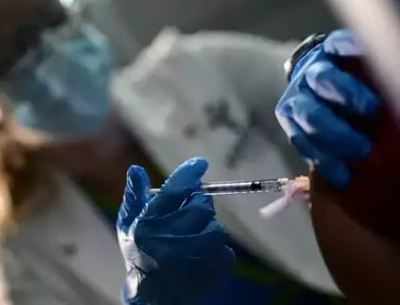
The central government’s current vaccination strategy allocates 25% of doses produced in India to the private sector. A TOI analysis of actual vaccination trends so far, however, shows that even in some of the biggest cities, private vaccination centres do not account for a quarter or more of the doses administered, and in rural areas of the same states they account for less than 5%.
To understand the share of private centres in vaccines administered so far, TOI downloaded data of over 9,000 vaccination centres in the eight largest cities and the most rural districts in the corresponding states. The centres were then separated into private and government-run. The data is as of 7am on Sunday morning.
The data shows that in the eight rural districts taken into account, private vaccination centres accounted for 0-3% of the doses administered in six districts. In the remaining two, both in Maharashtra, they accounted for just over 5% (see graphic). Clearly, rural India, where over 65% of the population still lives, according to census projections, is almost entirely dependent on government vaccination centres.
The data reflects the situation so far, but the private sector’s role in rural areas is almost certainly likely to dip even further. That’s because, till last month, states were allotting doses to private facilities and hence even small ones in relatively remote locations were able to get some doses. With the current policy leaving it to private players to deal directly with vaccine manufacturers, it is most likely that smaller standalone private facilities will find it difficult to get their hands on any doses while bigger hospital chains, which are predominantly in the big cities, will corner the bulk of the allocation for the private sector.
The highest shares of private players in doses administered were in some districts of Delhi and in the Bengaluru municipal corporation area, at close to 40%. In Kolkata and Chennai, private centres account for a third of doses administered and in Mumbai the share is just over 25%. In Pune and Ahmedabad, the two smallest cities among the big eight, the proportion is even smaller, 19% and 9%, respectively.
Since Delhi does not have a rural district, nearby Nuh in Haryana was taken as a comparison. But even within Delhi, northeast Delhi had a mere 3.7% share for the private sector in total doses administered. Also, the CoWin portal has Ahmedabad and Ahmedabad Corporation as separate districts as also Bangalore Urban and BBMP. In both cases, we have clubbed the two districts.
Of the nearly 1.9 crore doses administered in the eight cities up to Sunday (May 16) morning, 1.4 crore, or 75%, were administered in government centres. In the most rural districts in these eight states, out of 15.1 lakh doses administered, 14.8 lakh, or 97%, were administered in government centres.
Yet, the central government’s new “Liberalised Pricing and Accelerated National Covid-19 Vaccination Strategy” stipulates that out of the 50% non-government of India quota, half will go to the state governments and the other half to the private sector. The rationale, spelt out in the affidavit filed in the Supreme Court by the health ministry, is that “vaccination through private sector of 25% quantity would facilitate better access and will reduce the operational stress on the government vaccination facilities”. The data suggests quite the contrary.
This could also put state governments in a quandary. If they skew their own quotas towards the rural areas to compensate for the skew in private vaccination, the 18-44 group in the cities would be largely catered to by vaccines from private hospitals that have to be paid for. If they decide not to do so, the rural areas would be underserved.
FacebookTwitterLinkedinEMail


